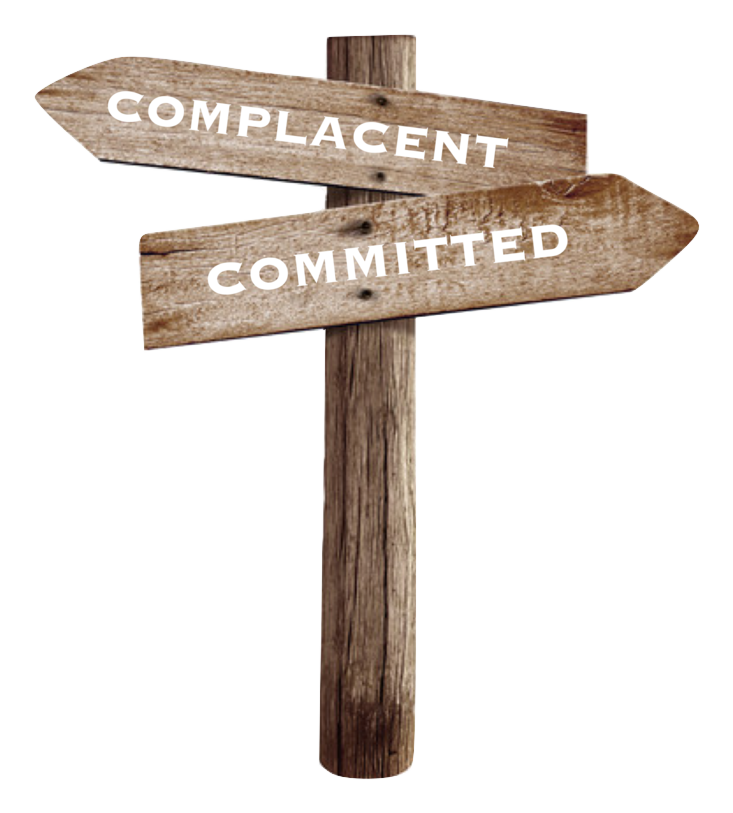 If you have attempted any workplace culture change initiative in the past, or plan on implementing a new program or protocol in the future, this article is for you.
If you have attempted any workplace culture change initiative in the past, or plan on implementing a new program or protocol in the future, this article is for you.
Because you will need to inspire your team buy-in to get the behaviors that will move the meter on the change you want to make.
And the reality is that ALL organizational progress and growth depends on individuals making a commitment to progress and growth.
The issue is that not all people in your organization see change as a good thing.
So how can leaders and managers move people across that spectrum of willingness and increase the level of team buy-in that they need for a successful workplace culture change?
Well, the first step is in identifying where your people are.
And they will all fall into one of three categories:
COMPLACENT
COMPLIANT
COMMITTED
Complacent employees are focused on their own comfort and most desire pain-avoidance.
Compliant workers are focused on survival and most desire self-preservation.
Committed teammates are focused on significance and most desire mission-success.
My experiences leading athletes in my basketball programs has been nearly identical to my experiences in working with corporate team building and developing more invested workers – in that the same things create and transform their level of buy-in and general style of behaviors.
Complacency is dangerous because it leads to a lack of attention to safety regulations and lack of attention to detail and decreased quality of work.
I have noticed that complacency is often a symptom of someone being disengaged – meaning the person likely does not see or care about the impact their efforts are having on the results they should be contributing to achieve.
You need to move them up the ladder to compliant, or off the ladder and out of your organization – because complacency is poisonous to your workplace culture.
To move people from complacent to compliant you must connect the dots for them and help them to appreciate how what they are doing (or not doing) is having an IMPACT on people or causes they care about.
Tell stories about the people and families that they are affecting.
And once you have ensured that the person is connected to a compelling common goal and is not longer complacent with a lack of effort, you will need to address compliance.
Compliance is the next level of team buy-in, but it is really not far above complacency.
I have noticed that compliance is often a symptom of a person being interested in doing the bare minimum of what is required. This is not referring to the compliance training that involves the appreciation and understanding of harassment, discrimination, or other HR topics, though.
Compliance regarding buy-in behaviors for your change initiative is about doing as little as possible to keep from getting called in for
Work with your team to establish a list of standards and behaviors that define and illustrate the values you want everyone to adopt. Ensure that these behavioral standards are as clear as possible.
And then work to move this group from compliance to commitment by connecting them to two very important things.
Commitment is the place where you want to get everyone on your team.
Commitment is nearly synonymous with engagement in this sense.
It is measured by how much a person cares about the results their efforts are contributing to…
If you want to increase a person’s commitment level, you need to connect them to two things –
- A meaningful mission that is shared with their teammates.
- A meaningful and respectful relationship with those teammates.
There are obviously other ingredients for building and sustaining a more positive and profitable team culture – but it is these two foundational connections that must be established before any of the other vital culture-building activities are attempted.
Without a connection to a compelling common goal… and to the other people who they will be depending on and collaborating with to successfully achieve it… people will not adopt the buy-in behaviors that are required for a healthy workplace culture.
If you want to learn more about how to build a more positive and profitable environment as a leader, check out my free team leadership video series HERE!


